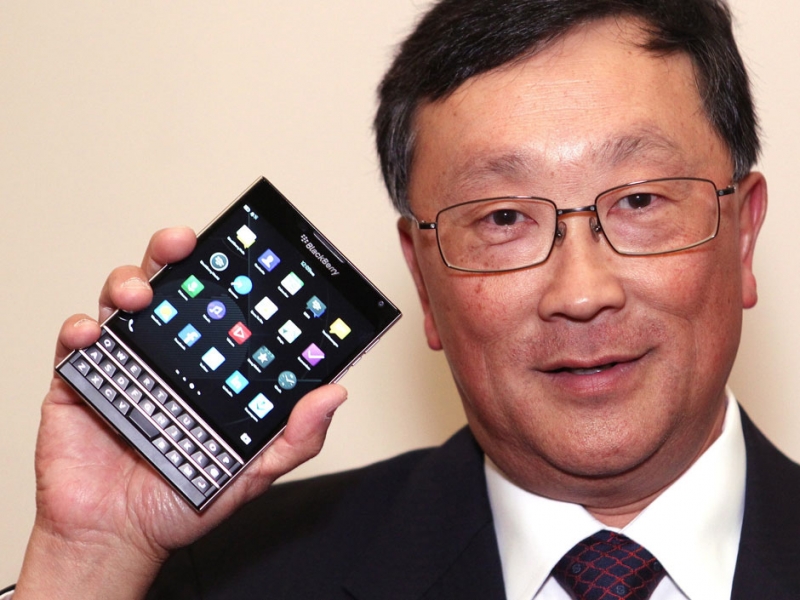
The age of the "crackberry" is past, and although BlackBerry is still alive and developing new products, the company hasn’t had a great decade.
Since the introduction of the iPhone, BlackBerry’s fortunes have plummeted. Recent failed or unimpressive efforts have included rebranding the company after its signature phone, which meant changing the name from the odd-sounding RIM to the recognizable BlackBerry name we have all loved and parodied. The company also released two touchscreen-only phones, ditching its physical keyboards in an effort that was ultimately unsuccessful.
But despite almost-negligible sales numbers, BlackBerry still exists. The reborn company is still trying to deliver another hit, and has tried again to disrupt the market with a new flagship phone. It’s a doozy.
The new BlackBerry Passport is, fittingly, the same size as your actual passport: a 4.5-inch, perfectly square screen with a physically keyboard stuck to the bottom edge. Your 1:1 Instagram photos will fit perfectly edge-to-edge (to-edge-to-edge) on this screen, assuming you were to use this professional business phone for such silly endeavors.
The size and sleek look is perhaps a nod to the high-productivity government- and business-sector personnel that got the company started so many years ago. However, the daring risk might be the width, even in this age of massive iPhones and even bigger Samsungs. One reviewer noted that by forcing the use of two hands, the “Passport forces me to risk my safety just to send an important text”. However, that being said, the physical keyboard is still prized by some die-hard BlackBerry fans and an important part of the phone company’s identity.
In the same review, Gizmodo said that despite decent technological specs and a nice screen, the phone was ultimately just “not enough,” that it was a good effort, but the phone’s strangeness wasn’t justified by any substantial innovation. Not good enough to save a brand: innovation can’t be imitated. Innovation often looks weird, but looking weird alone is not innovation. It takes a bit more than that to revolutionize and disrupt a market, and though the phone has some neat tricks, it’s nothing that amazing, and hardly groundbreaking.
Tech companies have a mixed reputation when it comes to rebranding. Some, like industry sweetheart Apple, have done it seemingly without effort: Apple Computer, with the launch of the iPhone, became simply Apple, and never looked back. It seems natural now, and indeed made sense at the time.
But one only needs to look at Myspace to see where this can go wrong. This was probably the chief inspiration for RIM’s rebranding itself to BlackBerry. Unfortunately, this fruit fell a bit too far from the tree, and the rebranding might have been more effective at the height of its popularity instead of a decade later. Done too late or ineffectively, rebranding can look desperate, fraught, and like a final hail-Mary pass at salvaging a doomed effort.
At the end of 2013 BlackBerry accounted for less than 1 percent of US smartphone sales, and posted similar numbers in other markets like China, Europe, and Japan, the sole exception being, strangely, the UK, where it accounts for about three times that proportion. Still not a very big deal.
It seems that the move has been made chiefly out of desperation: never a good sign. The Canadian company’s financial troubles have forced its hand, basically mandating drastic decisions like this strange, attention-grabbing phone. It’s hard to say what place there is in the modern market for the company that ostensibly developed the smartphone in the first place. The Passport seems unlikely to revitalize the company on its own. What else will it take?
 Russel Cooke is a business consultant specializing in Customer Relationship Management. In his free time, he contributes predominantly business-related articles, something he enjoys doing tremendously. You can follow Russel on Twitter @RusselCooke2.
Russel Cooke is a business consultant specializing in Customer Relationship Management. In his free time, he contributes predominantly business-related articles, something he enjoys doing tremendously. You can follow Russel on Twitter @RusselCooke2.

